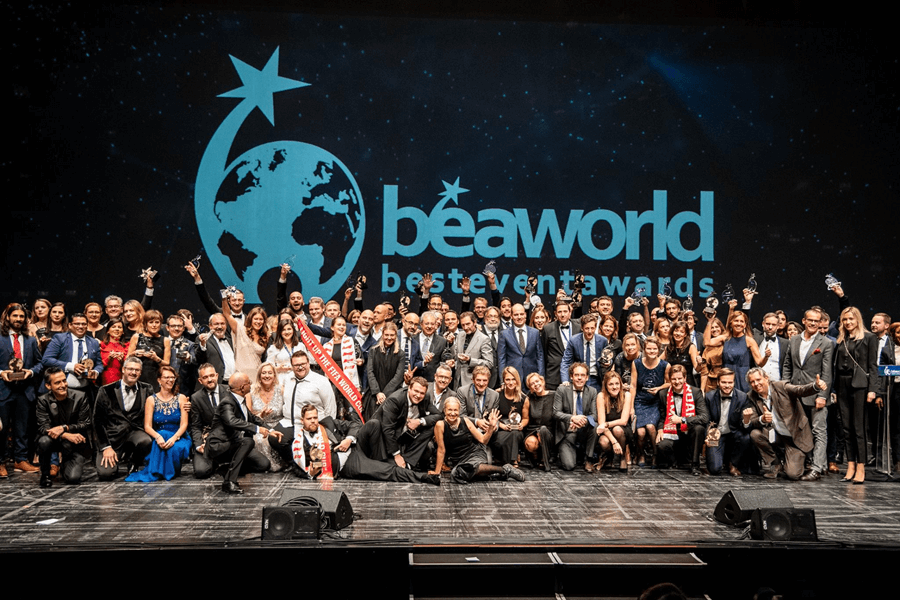How much does our industry weigh? Nobody knows

Share news
Listen
UK
UKEVENTS (the umbrella organisation of the UK’s events industry) published its UK Events Report 2024, realised by Great Potential Consultancy. According to this report, the MICE industry generates £33,6 billion annually (40bn euros), which amounts to 1.5% of UK GDP. As a comparison, the advertising market in the UK weighs 36.6 GPB.
The study separates the event market in three: corporate (which would be something like MICE), public (especially sports and culture), and charity events. The breakdown is as follows (the report does not indicate the value of charity events):
Business Events: £33,6bn
- Conferences and meetings £16,3bn
- Exhibitions & trade fairs £10,9bn
- Business travel meetings £4,0bn
- Incentive travel £2,4bn
Leisure/Outdoor Events: £28bn
- Arts & culture £5,6bn
- Fairs and shows £6bn
- Music events £6,6bn
- Sporting events £9,753bn*
- Air displays £100m
Total £61,6bn
France
According to the industry’s union of event associations UNIMEV (Union Française des Métiers de l’Événement) in its report published in 2024, French companies invest 4.7bn euros in events. Still according to UNIMEV, and without really clarifying if one figure is included in the other, the economic impact of congresses is 1.97bn euros. Clearly the congress market is more based on associations budgets than corporate budgets, but it is unclear how to combine these two figures.
In another study by UNIMEV published in 2019, the industry had an impact of 32bn euros and involved 335,000 full time-equivalent jobs (direct and indirect). Good luck trying to match these figures: even if there are 5 years difference between the figures, it is strange to have companies investing 4.7bn euros and the economic impact of this industry being 32bn euros.
Canada
In Canada according to IBISWorld, the market size of the Trade Show & Event Planning industry was $3.2bn in 2023, which would bd 0.2% of GDP… but Oxford Economics estimates $33bn (2% of GDP).
Global
In 2019, the Oxford Economics study sized the global business events market at $2.5 trillion. Another study by Technavio said the corporate events and seminar segment accounted for USD 231 billion in 2018. A slight difference…
Move forward a few years and the Event Industry market is estimated at US$ 1,18trillon in 2023, according to The Insight Partners (1% of globl GDP), while a report by ICCA estimates that the global spending on corporate events and meetings reached $450 bn in 2022 (0.4% of GDP).
Conclusion: what a mess!
The conclusion is that we have very little idea of the exact size of our industry. Studies range the size of the professional’s events market at 0.1% of GDP, others at 2% of GDP. Some studies include the trade shows, others don’t. Some include cultural and sports events and others don’t. Some orders of magnitude don’t make any sense (how can French companies spend 4,7bn euros in events… and the MICE market size in a comparable country, the UK, be 40bn euros?).
And the comprehensive study done by Oxford Economics, which analyses more than 50 countries and estimates their event market size (in 2019), almost exclusively relies on other studies: no specific analysis appears, only an interpretation of other studies… studies which don’t exist for the Spanish market for instance. Studies are always very light in the description of their methodologies, which probably no one reads. And I still have to find a detailed, clear explanation of the method used to estimate the size of this market: what do you ask or measure from end clients, from agencies, from providers?
Understanding our market size is important but terribly difficult. Let’s just remind you of a few challenges:
- Don’t forget that most large companies don’t track how much exactly they spend on events, as many different people, in different department and regions, plan events, from HR to marketing, press, corporate communication, sales departments… so getting information from them will be hard.
- You can ask agencies, but it is an extremely fragmented market, many agencies which are not specifically event agencies, organise events. Media also increasingly do, consultancies and many more. And agencies seem to control only between 55 and 60% of the market.
- If you ask providers, don’t forget we have 60 types of providers in our directory: who will you ask? And any measurement with official figures will be hard since almost all players (hotels, AV companies, transport…) serve events but also other segments, so you can’t use their global activity figures. You will have to analyse, ask, separate…
- You must define what you measure: is a festival organised by a brand, a cultural event or a corporate one? If you advertise a corporate event, is it part of the advertising budget or the event budget? And this will only get harder as communication gets more integrated.
- Double counting is easy (the agency will declare the whole event budget, and the hostess company declare their share – how to separate the two?).
- How to count an event done by a company from a country to another country: which country should get which share of that budget?
- How to avoid double counting: a pharma company attending a congress is a corporate event spending and will probably be reported as such… but also a congress (or association event) spending.
So, it is hard. Anyone trying to do it will find comfort in one factor: no one cares much about understanding the method and question it!!! And also we should not forget that the value of our industry is significant (1% of GDP seems to be a decent order of magnitude), and mostly, that our value is not to fill beds, but to be an amazing tool to make companies work better, motivate and train teams, improve medicine, raise awareness on important issues, activate CSR initiatives, and make the world a better place. And undoubtedly today, companies, governments, social agents, media… increasingly know this.










